For the past 25 years the IPM Institute of North America has been working with agricultural growers and community institutions to deploy a more sustainable, science-based system of managing pests.
This sustained commitment is in effort to realize their vision of “A world where food is grown in sync with natural processes and where agriculture and food companies are a force for good.”
By deploying methods such as soil preparation, monitoring and pest disruption techniques, the IPM Institute of North America aims to educate growers while empowering them to drastically reduce or eliminate the use of pesticides in their agricultural operations.
In institutional settings, such as schools or other public buildings, they endeavor to bring awareness to the health risks that pests can pose and implores leaders of these facilities to manage issues through preventative measures, like sanitation and monitoring, as a frontline defense.
While the Institute has been engaged in developing and advancing a broad range of sustainability strategies for more than two decades, it has been making marked strides with apple growers—whose crop is known to be notorious for attracting pests in certain regions.
In a recent interview with Kinute, Marnie McMullin and Peter Werts, from the Specialty Crop Program at the IPM Institute of North America, discuss the IPM approach, and the success they’re seeing with the growers utilizing these methods.
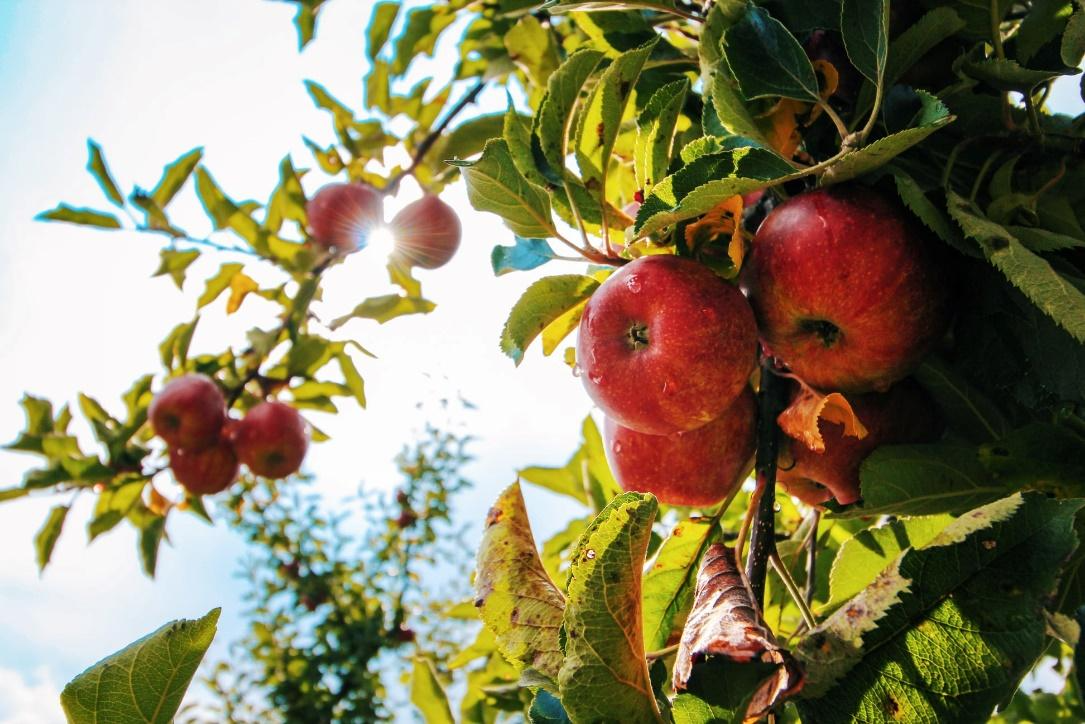
Courtesy of IPM Institute of North America
Q: The National IPM Roadmap states that “Integrated Pest Management (IPM) is a sustainable, science-based, decision-making process that combines biological, cultural, physical and chemical tools to identify, manage and reduce risk from pests and pest management tools and strategies in a way that minimizes overall economic, health and environmental risks.” Can you describe how pest problems are assessed and treated using this approach?
A: The IPM Institute’s Specialty Crop Grower Services is based in Madison, Wisconsin and primarily works with apple growers in the upper Midwest. Implementing a successful IPM plan in the orchard requires a whole systems approach. Pest problems are assessed in the orchard using predictive models, visual scouting and trapping of insect pests to determine what pest management strategies will best fit the orchard. Successful use of IPM considers the biology of the pest, effective non-chemical strategies for that crop and, as a last resort, guides use of low-risk pesticide options. Pest management recommendations include pesticide selection, use of biological controls and other alternative strategies like mating disruption. Encouraging adoption of new management strategies, understanding pesticide resistance and the biology of new pests are important to a successful IPM plan. Growers use a variety of tools including weather data, pheromones traps and mating disruption to monitor and disrupt the life cycle of target pests. Scouting for beneficial insects and/or delaying sprays that are toxic to beneficials and other pollinators. We provide up to date information on pesticide resistance and pollinator toxicity to also inform decisions.
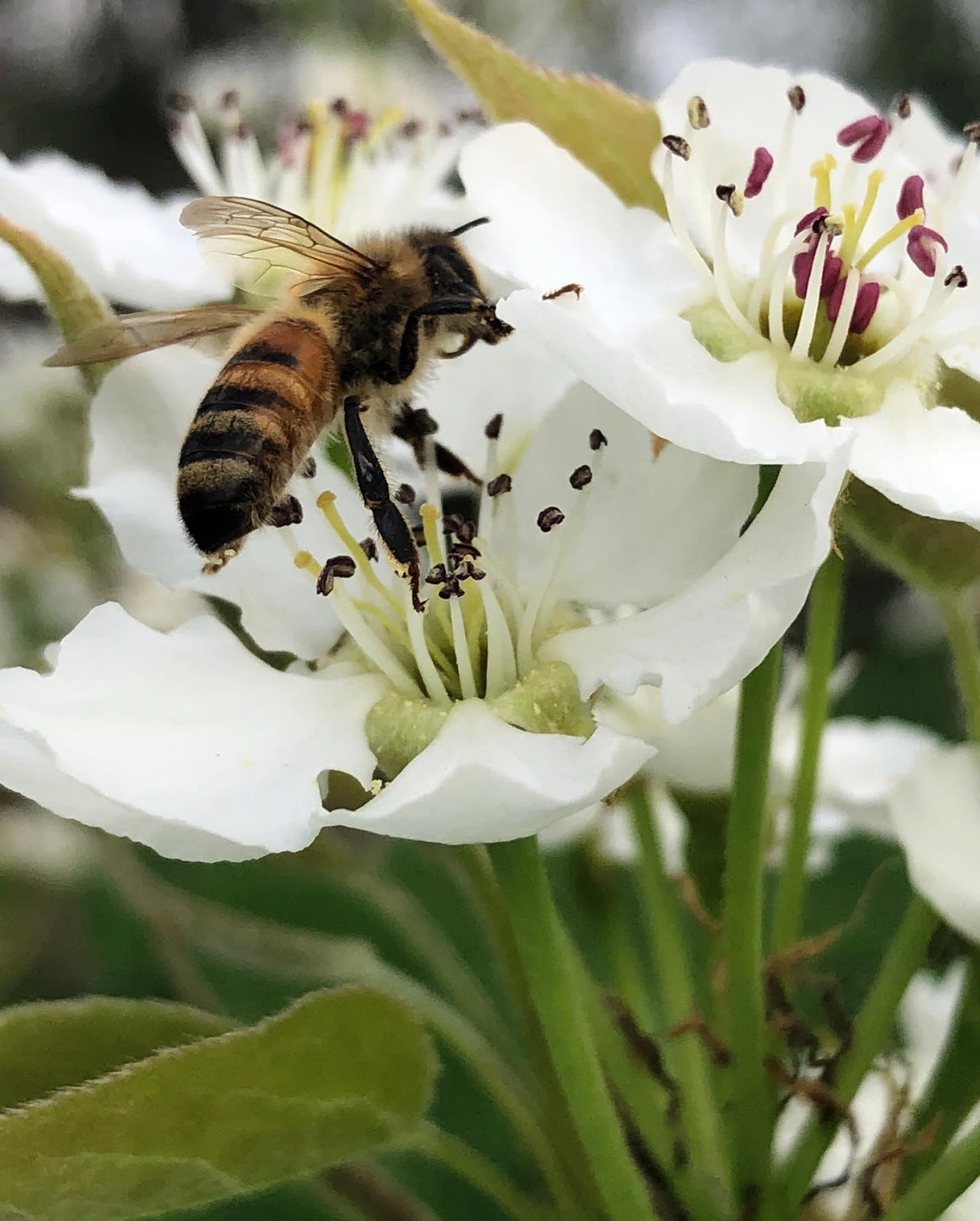
A bee visiting apple blossoms at an IPM managed orchard. Courtesy of Door Creek Orchard
What results are being realized by the apple growers you commonly work with who are using IPM methods for pest control?
When growers use the practical tools of IPM to manage their orchards, there can be a noticeable decrease in economic injury (more sellable apples), a higher diversity of beneficial organisms in the orchard and overall increased health of the orchard.
Growers improve their understanding of the orchard ecology, pest lifecycles and how to identify pests and beneficial insects in the orchards.
Growers have a greater appreciation for selecting pesticides that are safe for pollinators, people and the environment, even if they may cost more.
Reducing the use of certain broad-spectrum chemicals can have positive impacts in the orchard including preserving beneficial insects and organisms that, once flourishing, can help reduce pest populations.
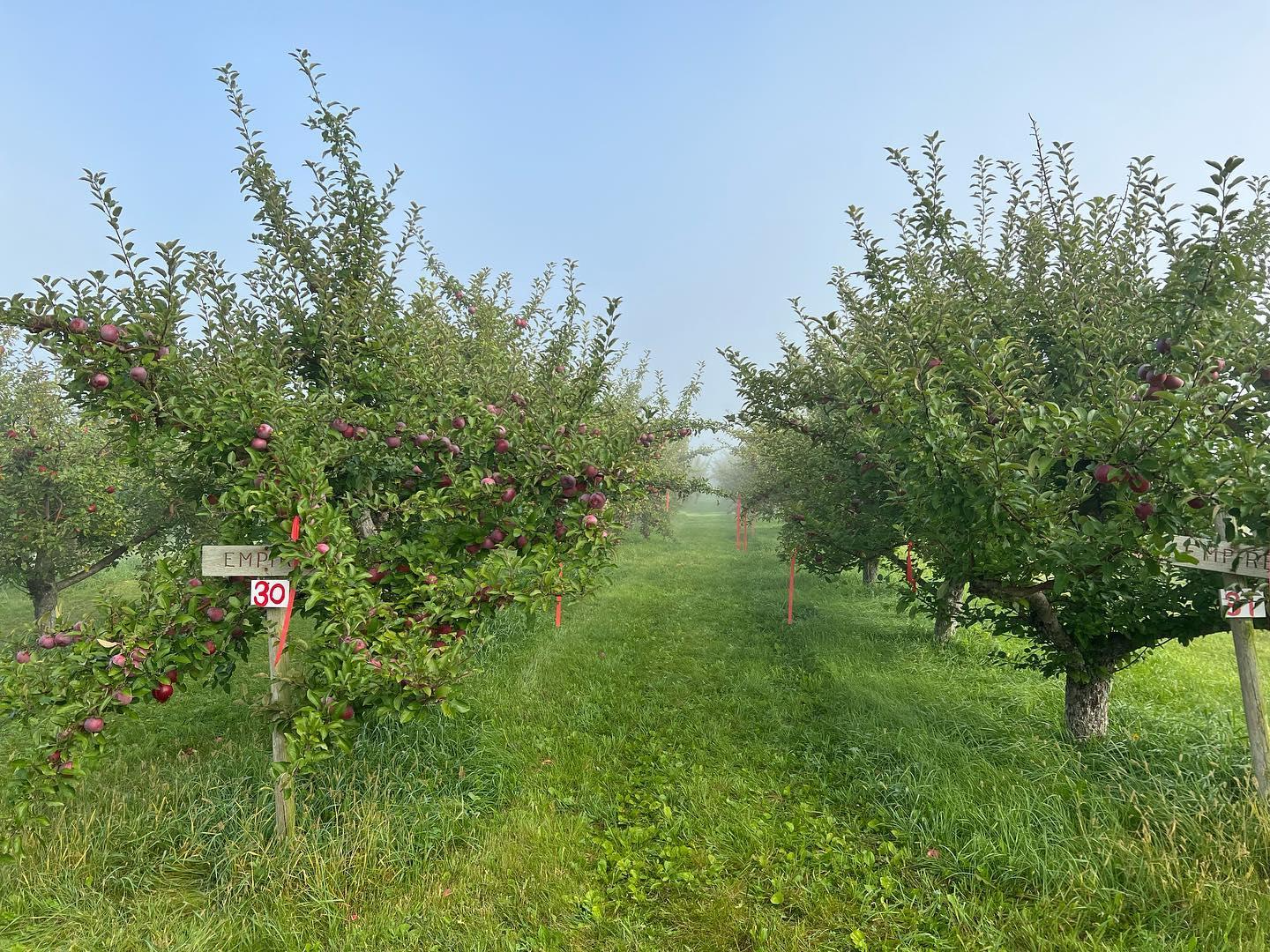
Healthy fruit set at an IPM managed orchard. Courtesy of Door Creek Orchard
Responsible pesticide use is a last resort in IPM. In your experience when is this use necessitated?
There are over 70 different pests and diseases that attack apples. Growing apples east of the Rocky Mountains almost always requires the use of pesticides in the orchard. Organic producers face these same challenges. Growers in the upper Midwest and Northeast United States face a significant amount of pest pressure compared to growers in the Pacific Northwest. Growers in the mid-Atlantic and Southeast are challenged with even more pest pressure. IPM offers a decision-making framework available to both organic, conventional and regenerative growers. This framework allows growers to understand their pests, farm ecology, and how they work together. Some pests may easily be managed or suppressed using a range of non-chemical controls. The use of pesticides, organic or conventional, is one of several ways growers can respond to pest pressure. The most advanced growers prioritize protection of environmental and human health when selecting pesticides.

Baby birds nesting in an apple tree at an IPM managed orchard. Courtesy of Two Onion Farm
How common is it to achieve pest control with non-chemical methods in the IPM approach?
Apples grown in the Midwest under conventional, sustainable or organic almost always require a chemical approach. A more common IPM approach to orchards in the Midwest is to use the best practices of IPM—low risk chemical options, monitoring and trapping, mating disruption and scouting for beneficials in the orchard. For example, when a common orchard pest, the Wooly Apple Aphid, begins to emerge mid-summer, instead of spraying a pesticide immediately for this pest, with continued monitoring, it is often discovered that biological controls like parasitic wasps are present in the orchard and able to keep these pest populations low. If a broad-spectrum insecticide would have been applied as soon as the aphids were discovered, the aphids and beneficials would have been eradicated from the orchard. Using the IPM practice of scouting for beneficials can result in lower, or no pesticide applications needed for certain pests.
The IPM Institute of North America’s mission is to “Improve sustainability in agriculture and communities by using the power of the marketplace: buyers want to support products and services that work to protect the environment and reduce health hazards.” Is there currently a certification label that alerts buyers to IPM practices or other sustainability measures in food production?
EcoCertified™ is a rigorous protocol of the most advanced IPM practices tailored to apple growing conditions in the Northeast. EcoCertified™ practices are designed to protect pollinators and wildlife, promote soil and tree health and treat orchards as holistic ecosystems. The IPM Institute manages the protocol for this certification. You can find this label in Whole Foods and smaller groceries in the Northeast. We are working to expand this program into the Midwest in 2024.
The Sustainability Standard is a certification applicable to all farming operations and facilities with a focus on advanced Integrated Pest Management practices, as well as social and environmental best practices. The Sustainability Standard, in addition to IPM, addresses environmental protection, soil health, nutrient and irrigation management, air quality, waste and recycling, water and energy conservation, worker welfare and emergency management. The Sustainability Standard certification is used by growers and distributors to communicate sustainability practices to their customers. The Sustainability Standard certification is managed by Sustainable Food Group which is a part of the IPM Institute.
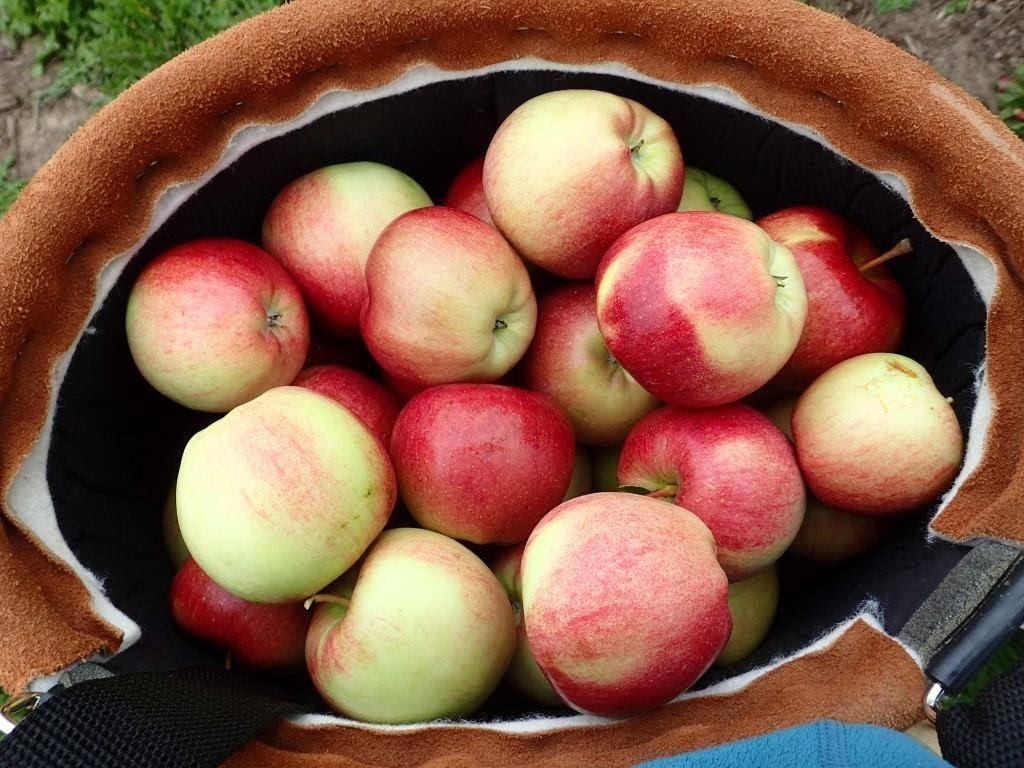
Apple harvest from an IPM managed orchard. Courtesy of Two Onion Farm
Is there a certain type of grower that you commonly find is attracted to IPM?
IPM is available to all types of farmers. Any grower that has a pest problem should be using IPM. Let’s consider that IPM is still the process to use to guide the timing and implementation of non-chemical controls, in addition to use of pesticides. This allows organic, conventional, and regenerative to all benefit from the outcomes of IPM programs.
What’s on the horizon that the IPM Institute of North America is excited about?
As previously mentioned, the IPM Institute has been working with apple growers in the Northeast, helping them manage a rigorous IPM focused program called EcoCertified™ which is housed within a non-profit food hub in the Northeast, called Red Tomato. This year, we are working to expand the EcoCertified™ program to apple growers in the Midwest with a goal of helping orchards better tell the sustainability story of their orchard through education, marketing and POS tools.
We look forward to continued adoption of the Sustainability Standard by distributors and growers throughout the food supply chain.
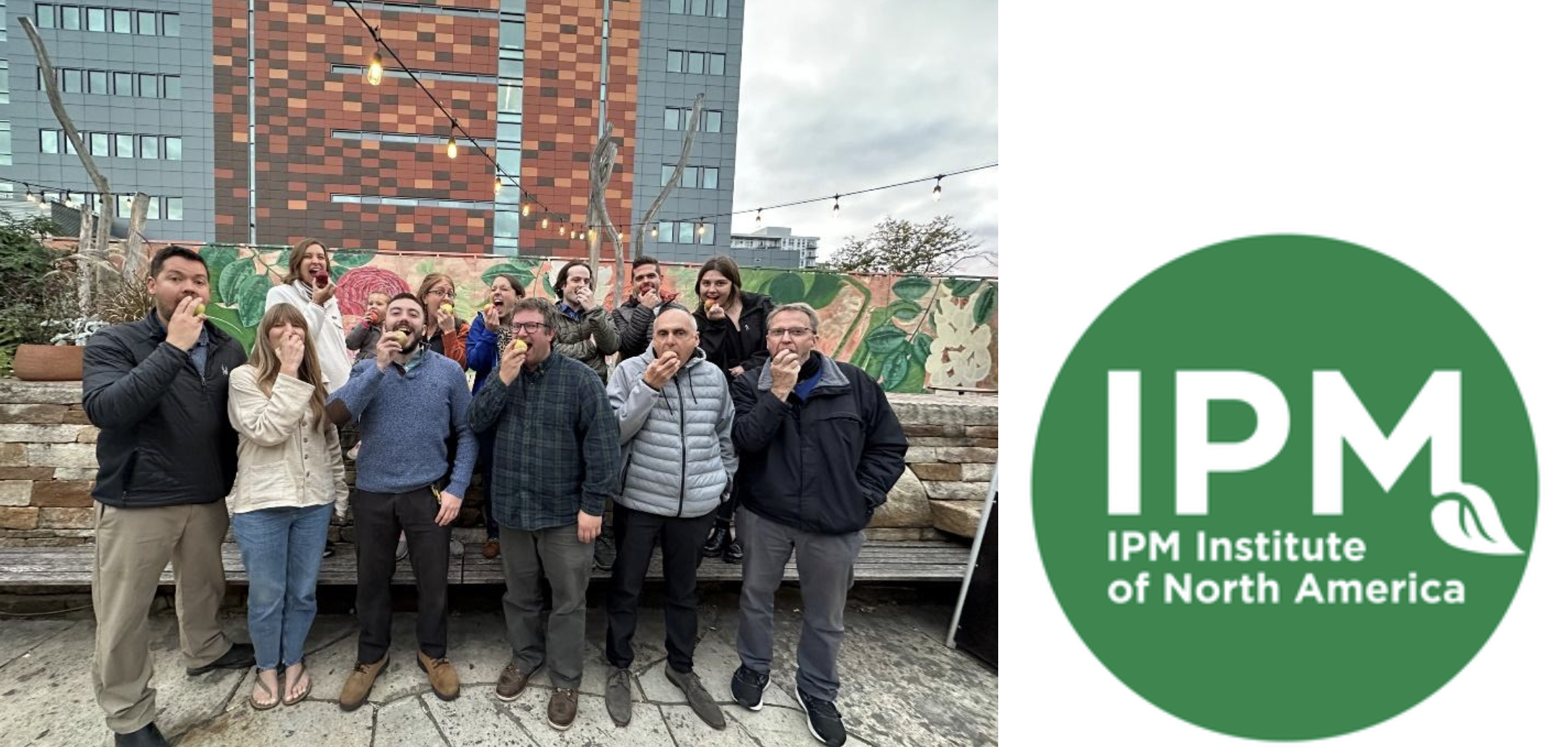
The Institute team enjoying apples from orchards they partner with. Courtesy of IPM Institute of North America
